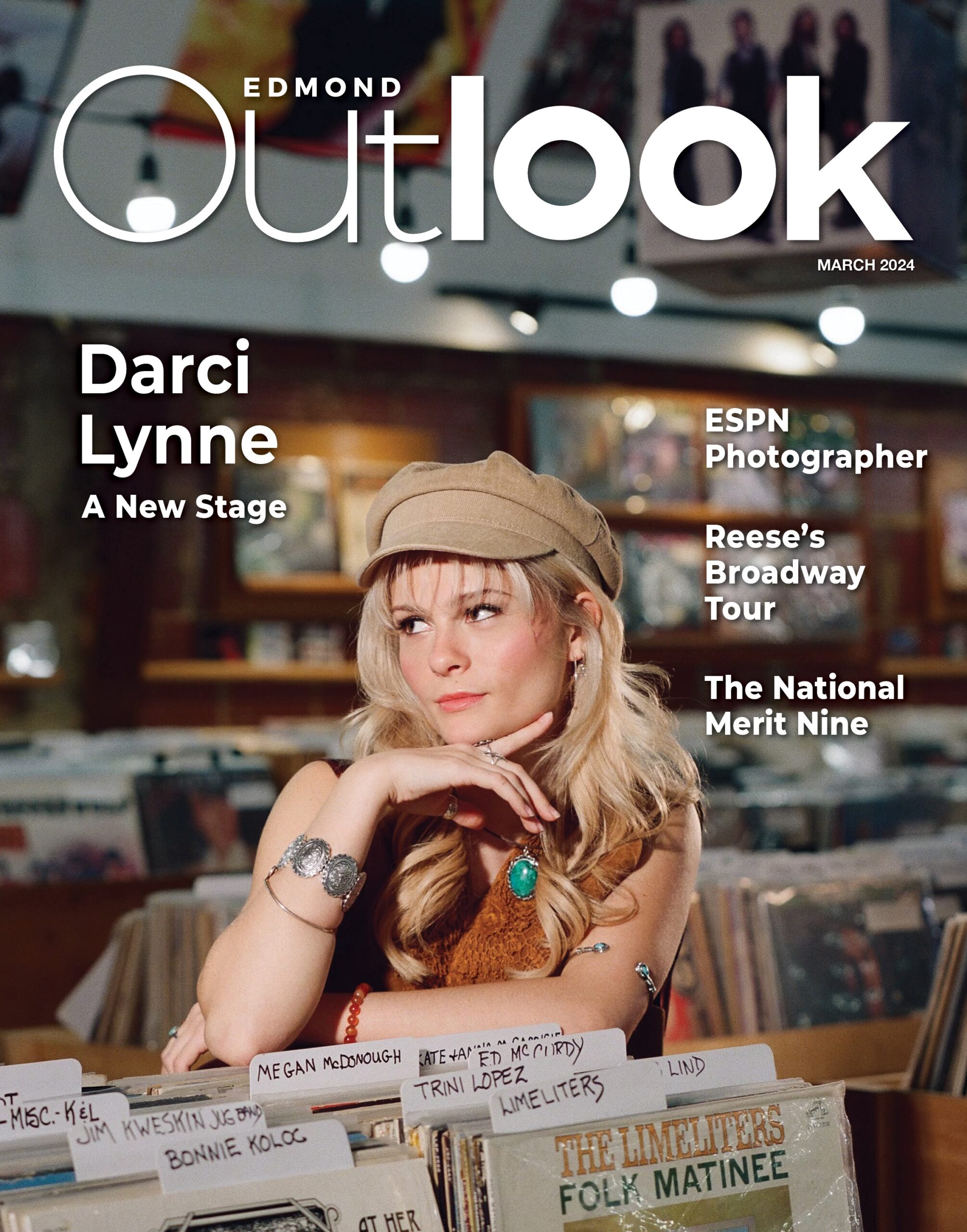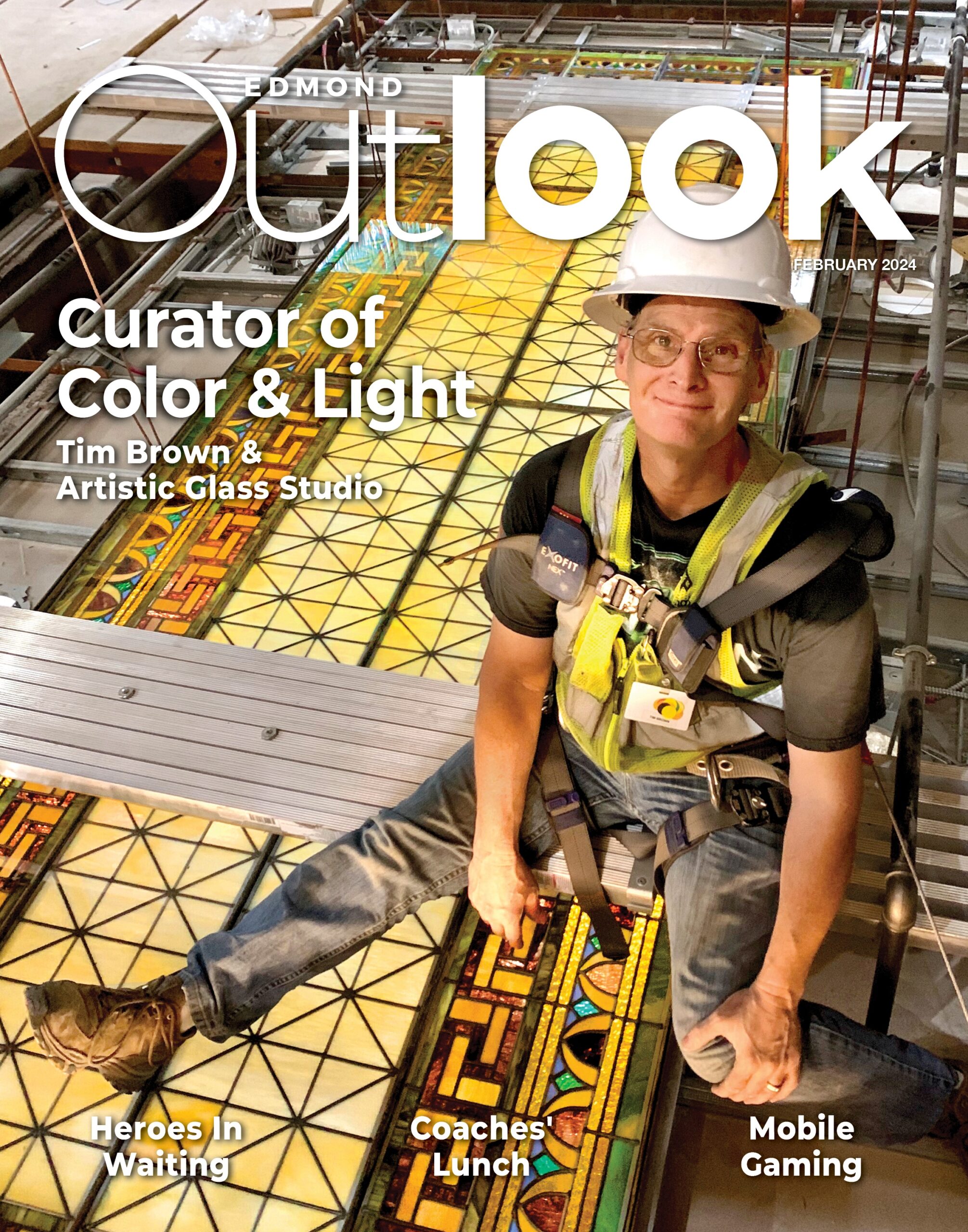Walking the Line
I scan the road from the northeast lane to the southwest lane. It’s difficult to see. Other than squad car lights, nearly burnt out signs from a run-down liquor store provide the only illumination. “The line” stretches 112 feet. It marks the trajectory of a pedestrian—already en route to the hospital—hit by a sport utility vehicle. The driver of the SUV was well within the speed limit. Jaywalking can carry a hefty price.
Scenes like this are everyday, garden-variety experiences for my guide, Staff Sergeant Brandon Benson of the Oklahoma City Police Department’s nine-member Fatality Collision Investigation unit. With his familiarity with collisions, it takes him little more than five minutes to survey the scene in front of us and break it down for me.
“It was the first rainfall in a month and the glare off the asphalt reduces vision for drivers. The pedestrian wore dark clothing and crossed just over the crest of a hill. Dark clothing, rain, glare, a hillcrest and slick roads were all factors in this death. The ultimate cause was the pedestrian crossing the road in mid-block without caution. The driver was unable to stop in time. She’ll have to live with this night for the rest of her life,” says Benson.
Benson, a forensic collision investigator, sees ghosts where I only see wrecks. His attention to detail, the product of years of training and experience, is formidable. The end of the line, however, is easy for both of us to spot. Bandage wrappers and other debris circle the spot where the victim slid to a stop. The Emergency Medical Technicians, first responders, don’t have time to pick up their trash.
The middle of the line is a bit harder to see, but with some work I can spot it. A pair of cracked glasses roughly 60 feet from the point of impact marks it. I spot them only because they reflect the red and blue strobes of the police cars.
As I walk from the end of the line to the beginning, it becomes clearer. A pair of old shoes marks the victim’s landing spot on the pavement—before her slide. “Most pedestrian collisions over 35 miles per hour will knock the victim right out of their shoes,” says Benson.
The victim’s keys, pieces of change, a half-empty pack of cigarettes—all emptied from her pockets during the fatal skid—mark the remainder of the path.
It’s the point of collision that’s a puzzle. This is where Benson does his best work. He works collision scenes backwards, starting from the body and moving back towards the point of impact.
He asks me if I see a pair of skid marks on the northeast side of the road—almost 30 feet from where we stand. No way. As far as I can see it’s just more asphalt, wet from the drizzling rain. He proves me wrong by standing on the marks before I can see them from three feet away. Faint—very faint—double lines show where the victim’s feet dragged as she was lifted onto the hood of the SUV before being thrown twenty feet. She slid the remaining 82 feet.
To me, this looks like an accident. To Benson it’s a “collision.” Says Benson, “People have always called these ‘accidents.’ An accident is when you hit your thumb with a hammer. Collisions, though unintended, are the result of someone violating a traffic law intended to prevent them. Car wrecks generally are not accidents. They are collisions because 99 percent of the time an unlawful act was the cause.”
After Benson reconstructs the story behind the collision the entire crime scene is surveyed CSI-style. Benson demonstrates a laser that allows his team to measure the scene to the inch. Along with another officer he maps every angle of the scene. For many collision scenes, when the tech comes out, the truth does, too.
A small computer called a “Vericom” allows officers to measure and compare skid marks at the scene.
“The Vericom calculates the braking speed, the drag factor of the roadway or surface in question and the amount of time it took to skid to a stop,” he says, “We use this information to answer questions that we’ll employ to come up with a speed for the involved vehicles.”
Newer vehicles contain what’s known as a “Crash Data Recorder”—the motorist’s equivalent of the black boxes found in airplanes. “Using a computer, we plug into a vehicle’s data port and download data up to five seconds before the vehicle’s air bag deployment. The data collected is speed, percentage of throttle, braking percentage and whether or not a seat belt was in use.”
Joining Benson’s unit is no easy task. “It literally took me 10 years to get into the unit,” says Benson, “There’s stiff competition to get in. The training never ends and constantly changes. Being in this unit takes a lot of training and willingness to learn new things and ideas.” After joining the unit, he attended the police department’s Drug Recognition Expert School, as well as several programs involving scene investigation, advanced investigations, and collision reconstruction. Next year he’ll train in pedestrian and motorcycle collisions.
Benson pulls his camera out, as well. To correspond with the digital map of the scene, photos are taken of all the evidence from every possible angle. Combined with the scene map, any professional can rebuild the scene in their head.
Collision maps are published with the help of computer aided drafting programs. Benson archives details of the scene down to the inch and all to scale. The maps are later used by lawyers, prosecutors, insurance companies and involved drivers—all searching for an answer to the question, what caused the collision?
“What we determine at the scene could cost insurance companies millions of dollars or send involved drivers to prison for life, so we strive for perfection,” he says, “We use physics, geometry, algebra and good, old-fashioned math to come up with speeds, entry and departure angles and other figures necessary for each case.”
Gouges in the street. Scratches and dings on doors and bumpers. Shattered glass. Skid marks. These are all evidence missed by my untrained eyes. But Benson catches them easily and each one is a chapter in the story of a collision that unfolds as he works a scene.
Collisions have their own equivalents of fingerprints. Bending down over the front bumper, Benson shows me how it works. Headlights, for example, never break the same way twice. Benson picks up a few pieces of headlight plastic, delicately pieces them together, and places them against the headlight. They’re puzzle pieces and, all together, they form a piece of evidence that no court will dispute. Benson frequently uses the same trick with paint flakes.
Hints of regret break through Benson’s hard-boiled demeanor and cool professionalism. The vast majority of collisions he investigates are preventable. Benson is not a thin-skinned guy. Nobody can see catastrophes like this day in and day out without being touched. But it’s his job. And he does it well.


